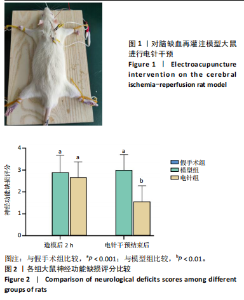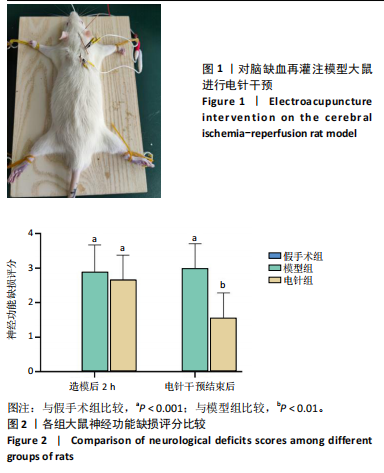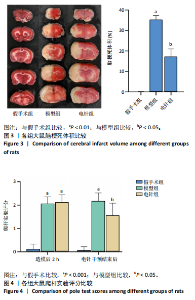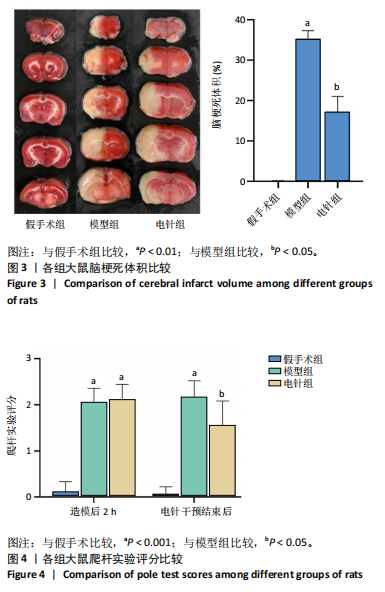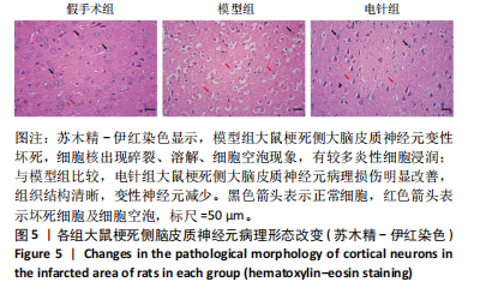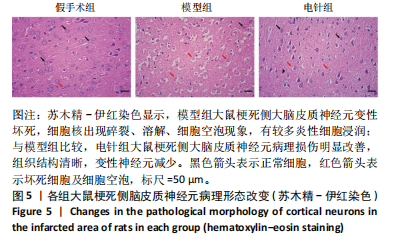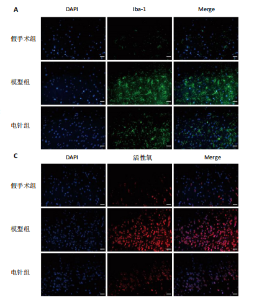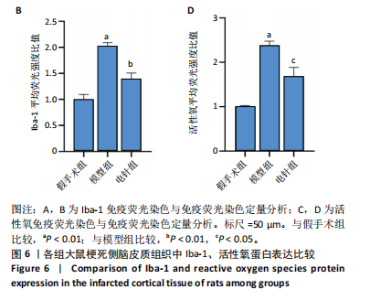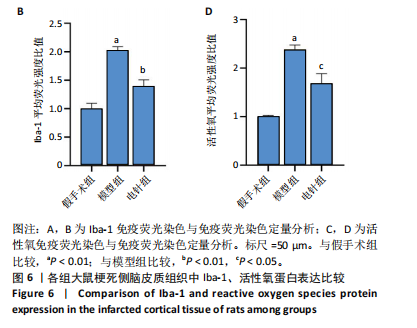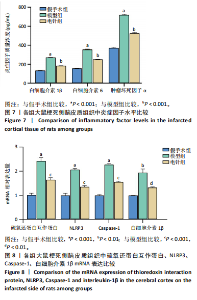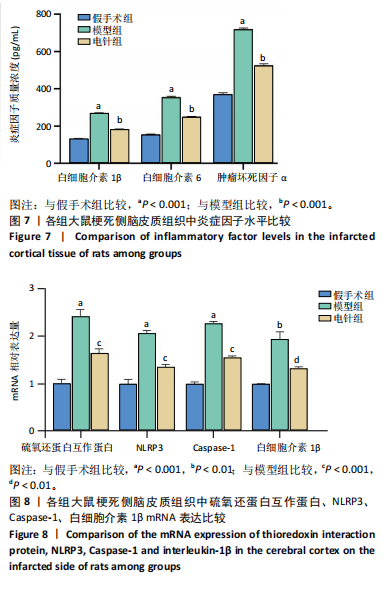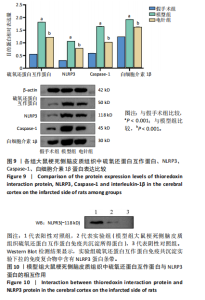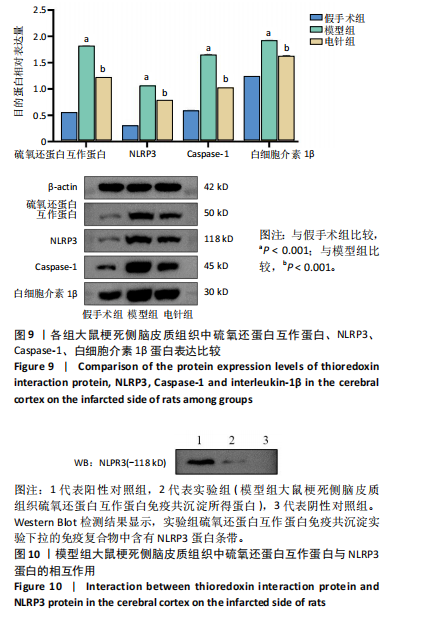[1] CHEN KH, CHAI HT, CHEN CH, et al. Synergic effect of combined cyclosporin and melatonin protects the brain against acute ischemic reperfusion injury. Biomed Pharmacother. 2021;136:111266.
[2] ZANG M, ZHAO Y, GAO L, et al. The circadian nuclear receptor RORalpha negatively regulates cerebral ischemia-reperfusion injury and mediates the neuroprotective effects of melatonin. Biochim Biophys Acta Mol Basis Dis. 2020;1866(11):165890.
[3] 魏思灿,林天来,黄玲,等.槲皮素通过PINK1/parkin通路激活线粒体自噬减轻大鼠脑缺血再灌注损伤[J].中国病理生理杂志, 2020,36(12):2251-2257.
[4] CAI L, YAO Z Y, YANG L, et al. Mechanism of Electroacupuncture Against Cerebral Ischemia-Reperfusion Injury: Reducing Inflammatory Response and Cell Pyroptosis by Inhibiting NLRP3 and Caspase-1. Front Mol Neurosci. 2022;15:822088.
[5] DOS SI, DIAS M, GOMES-LEAL W. Microglial activation and adult neurogenesis after brain stroke. Neural Regen Res. 2021;16(3):456-459.
[6] FU CY, ZHONG CR, YANG YT, et al. Sirt1 activator SRT2104 protects against oxygen-glucose deprivation/reoxygenation-induced injury via regulating microglia polarization by modulating Sirt1/NF-kappaB pathway. Brain Res. 2021;1753:147236.
[7] BARRINGTON J, LEMARCHAND E, ALLAN SM. A brain in flame; do inflammasomes and pyroptosis influence stroke pathology? Brain Pathol. 2017;27(2):205-212.
[8] 陈丽莹,蒋佩萱,徐诗婷,等.小胶质细胞活化介导的MMP-9信号通路在电针预处理对MCAO大鼠的脑保护效应中的作用[J].上海针灸杂志,2020,39(1):90-97.
[9] JIA Y, CUI R, WANG C, et al. Metformin protects against intestinal ischemia-reperfusion injury and cell pyroptosis via TXNIP-NLRP3-GSDMD pathway. Redox Biol. 2020;32:101534.
[10] SONG MY, YI F, XIAO H, et al. Energy restriction induced SIRT6 inhibits microglia activation and promotes angiogenesis in cerebral ischemia via transcriptional inhibition of TXNIP. Cell Death Dis. 2022;13(5):449.
[11] 章薇,娄必丹,李金香,等.中医康复临床实践指南·缺血性脑卒中(脑梗死)[J].康复学报,2021,31(6):437-447.
[12] ZHU W, YE Y, LIU Y, et al. Mechanisms of Acupuncture Therapy for Cerebral Ischemia: an Evidence-Based Review of Clinical and Animal Studies on Cerebral Ischemia. J Neuroimmune Pharmacol. 2017;12(4):575-592.
[13] 罗敷,舒象忠,刘丹妮,等.电针对脑缺血再灌注损伤大鼠Toll样受体4/核因子κB信号通路的影响[J]. 中国组织工程研究,2024, 28(14):2186-2190.
[14] 刘丹妮,孙光华,周桂娟,等.电针水沟、百会穴对脑缺血再灌注损伤大鼠大脑皮质神经元凋亡的影响[J].中国组织工程研究, 2022,26(35):5620-5625.
[15] 严年文,阮甦,王芳,等.电针调控褪黑素-核苷酸结合寡聚化结构域样受体蛋白3炎性小体抑制细胞焦亡减轻脑缺血大鼠脑缺血损伤[J].针刺研究,2023,48(3):233-239.
[16] 吴海洋,王颖,韩为.通督调神针刺联合小续命汤加减治疗气虚血瘀型中风临床研究[J].山东中医杂志,2022,41(2):181-185.
[17] 吴海洋,王颖,韩为.通督调神针刺对脑缺血再灌注大鼠脑组织肿瘤坏死因子-α和C反应蛋白的动态影响[J].针刺研究,2015, 40(3):215-218.
[18] 吴海洋,王颖.小续命汤联合超早期针刺督脉对于脑缺血再灌注模型大鼠自噬相关蛋白NF-κB p65的影响[J].中国实验方剂学杂志, 2020,26(18):30-35.
[19] 包新杰,赵浩,魏俊吉,等.线栓法建立大鼠局灶性脑缺血模型的改进[J].中国脑血管病杂志,2011,8(5):248-252.
[20] LONGA EZ, WEINSTEIN PR, CARLSON S, et al. Reversible middle cerebral artery occlusion without craniectomy in rats. Stroke. 1989;20(1):84-91.
[21] 中国针灸学会.实验动物常用穴位名称与定位第2部分:大鼠[J].针刺研究,2021,46(4):351-352.
[22] 赵筱汐,李征松,王玥.小鼠局灶性脑缺血模型中行为学测试方法的比较[J].中国康复医学杂志,2016,31(7):821-824.
[23] 钟迪,张舒婷,吴波.《中国急性缺血性脑卒中诊治指南2018》解读[J].中国现代神经疾病杂志,2019,19(11):897-901.
[24] LIM S, KIM TJ, KIM YJ, et al. Senolytic Therapy for Cerebral Ischemia-Reperfusion Injury. Int J Mol Sci. 2021;22(21):11967.
[25] WANG H, XU X, WANG Z, et al. Mechanism Research of Electroacupuncture Stimulation at Baihui and Zusanli in Cerebral Ischemia-reperfusion Injury Using RNA-Sequencing. Clin Complement Med Pharmacol. 2023(2). doi: 10.1016/J.CCMP.2023.100086
[26] 唐红,郑慧娥,汪红娟,等.针刺对脑缺血再灌注损伤模型大鼠海马细胞凋亡的影响[J].神经解剖学杂志,2023,39(3):326-332.
[27] KANG T, QIN X, LEI Q, et al. BRAP silencing protects against neuronal inflammation, oxidative stress and apoptosis in cerebral ischemia-reperfusion injury by promoting PON1 expression. Environ Toxicol. 2023;38(11):2645-2655.
[28] 岳萌,孙世辉,张紫晶,等.活性氧通过影响线粒体膜电位参与小鼠高血糖加重脑缺血性损伤[J].神经解剖学杂志,2019,35(1):35-40.
[29] 补娟,纪国庆,叶勒丹·马汉,等.刺槐素通过自噬调控ROS/NLRP3信号通路对脑缺血再灌注损伤发挥保护作用[J].中风与神经疾病杂志,2023,40(2):99-102.
[30] XU S, CHEN H, NI H, et al. Targeting HDAC6 attenuates nicotine-induced macrophage pyroptosis via NF-kappaB/NLRP3 pathway. Atherosclerosis. 2021;317:1-9.
[31] CAI L, YAO Z Y, YANG L, et al. Mechanism of Electroacupuncture Against Cerebral Ischemia-Reperfusion Injury: Reducing Inflammatory Response and Cell Pyroptosis by Inhibiting NLRP3 and Caspase-1. Front Mol Neurosci. 2022;15:822088.
[32] GUO Y, DAI W, ZHENG Y, et al. Mechanism and Regulation of Microglia Polarization in Intracerebral Hemorrhage. Molecules. 2022;27(20): 7080.
[33] ZHANG D, FENG Y, PAN H, et al. 9-Methylfascaplysin exerts anti-ischemic stroke neuroprotective effects via the inhibition of neuroinflammation and oxidative stress in rats. Int Immunopharmacol. 2021;97:107656.
[34] YAO Z, LIU N, ZHU X, et al. Subanesthetic isoflurane abates ROS-activated MAPK/NF-kappaB signaling to repress ischemia-induced microglia inflammation and brain injury. Aging (Albany NY). 2020; 12(24):26121-26139. |
